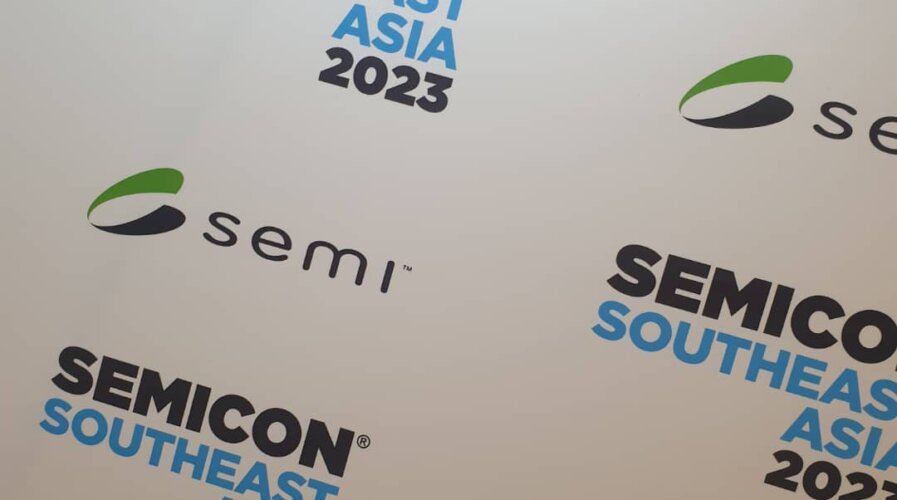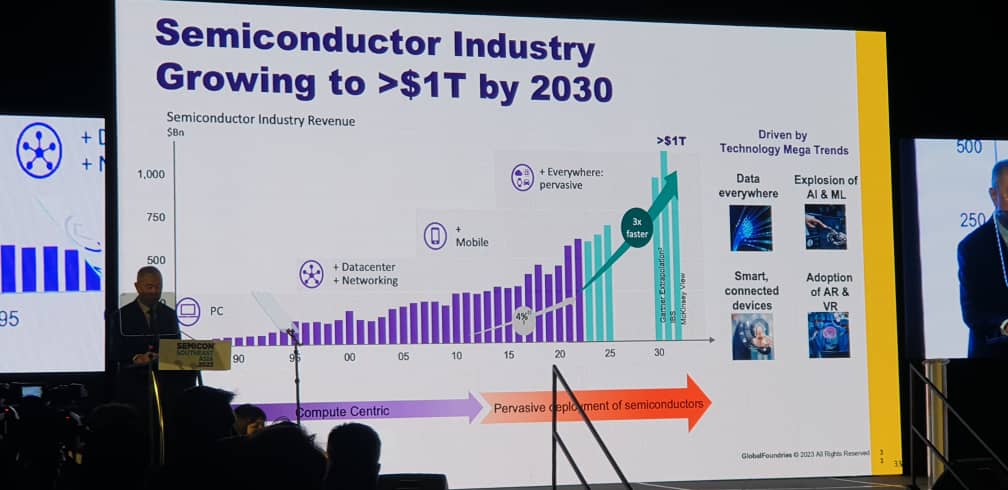
Semiconductor industry converges in Penang for SEMICON Southeast Asia
SEMICON Southeast Asia kicks off in Penang, Malaysia. The region’s premier event for the global electronics manufacturing and design supply chain opened with critical semiconductor industry topics including supply chain resilience, sustainability, Smart Manufacturing, Smart Mobility, Smart MedTech, and workforce development in focus.
Malaysia’s Deputy Prime Minister Datuk Seri Dr Ahmad Zahid Hamidi officiated the launch which is expected to draw more than 10,000 attendees and nearly 300 exhibitors. The event brings together chip manufacturing and equipment companies, private and public partners, and other key industry stakeholders to foster collaboration and explore new growth opportunities. Among the brands at the event include Western Digital, DHL, Applied Materials, Micron, Schneider, KLA and many more.
In his opening remarks, Zahid mentioned that Malaysia will continue to be open to semiconductor investments as the country looks to become a major contributor to the industry. This includes plans to broaden the area in which semiconductor fabs can be built.
“If Malaysia can provide 15% of the global market share for semiconductors by 2030, our contribution will be huge for the industry,” commented Zahid.
The semiconductor industry has its sight set on reaching US$1 trillion in revenue by 2030. Malaysia currently contributes about 7% of the global market share for semiconductors.
Echoing Zahid’s sentiments is Ajit Monacha, the president and CEO of SEMI. According to Monacha, while the semiconductor industry may reach US$1 trillion by 2030, the development of talent is not growing at the same pace and this will be an issue for the industry.

SEMICON Southeast Asia
In 2023, the semiconductor industry is expected to generate US$600 billion in revenue. But supply chain issues continue to have a strong impact on the industry globally. Monacha said while shortages have eased, pockets of tight supply are expected to remain through 2023.
At the same time, with skills development in the industry a prerogative, Zahid also mentioned that Malaysia is actively developing tech skills in the country. Specifically, there are three key areas in the industry where skills are being developed.
“We are working with industry players in developing the right skills needed to close the skills gap. The courses have to be tailored to the demand. There are three levels for this which are semi-skilled workforce, skilled workforce and professional workforce,” added the minister.
When asked about the competition in the region in luring semiconductor investments, Zahid pointed out that the industry and nations should be looking to complement each other and work together instead of competing with each other.
“We should not compete. We should complement because we are not only providing infrastructure but also training the workforce,” said Zahid.
The SEMICON Southeast Asia summit also convened industry thought leaders to provide insights on modernizing supply chain strategies in response to ongoing industry disruptions and geopolitical instability. Focusing on building a more agile and resilient semiconductor industry supply chain, speakers include Bettina Weiss, Chief of Staff and Corporate Strategy at SEMI, Kent Rossman, Corporate Senior Vice President of Global Operations at ASM and several others.
The SEA Investment Forum focused on opportunities in the Southeast Asia semiconductor supply chain while the Workforce and Talent Development Pavilion featured a career fair and presentations, the SEMI University Bootcamp, and SEMI University, a new online learning management system offering courses for professionals in the semiconductor and electronics industries.
READ MORE
- 3 Steps to Successfully Automate Copilot for Microsoft 365 Implementation
- Trustworthy AI – the Promise of Enterprise-Friendly Generative Machine Learning with Dell and NVIDIA
- Strategies for Democratizing GenAI
- The criticality of endpoint management in cybersecurity and operations
- Ethical AI: The renewed importance of safeguarding data and customer privacy in Generative AI applications


